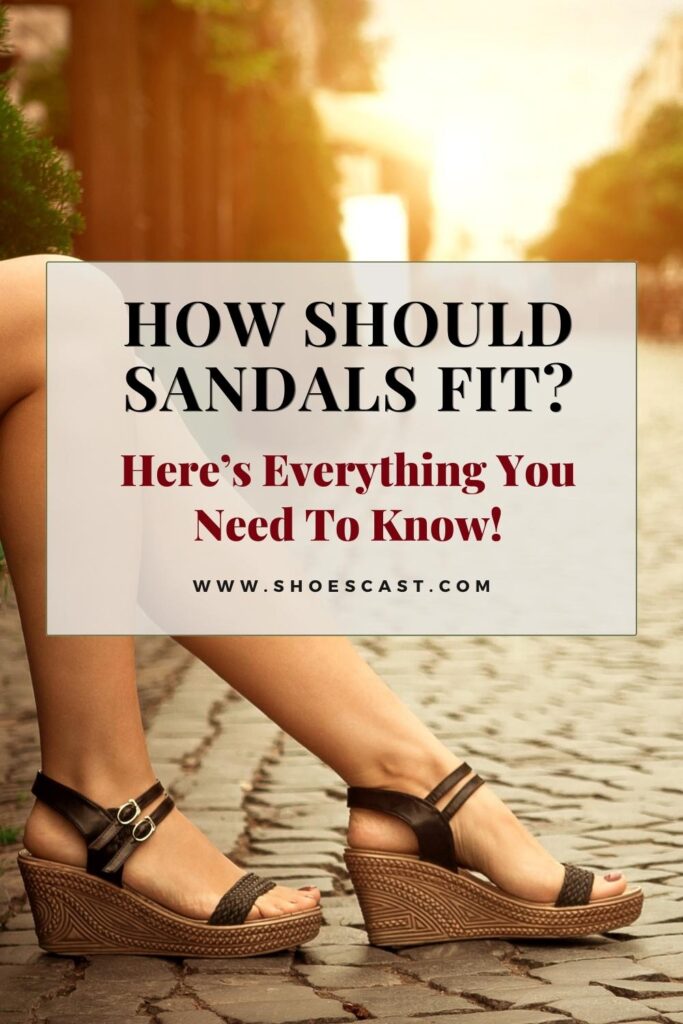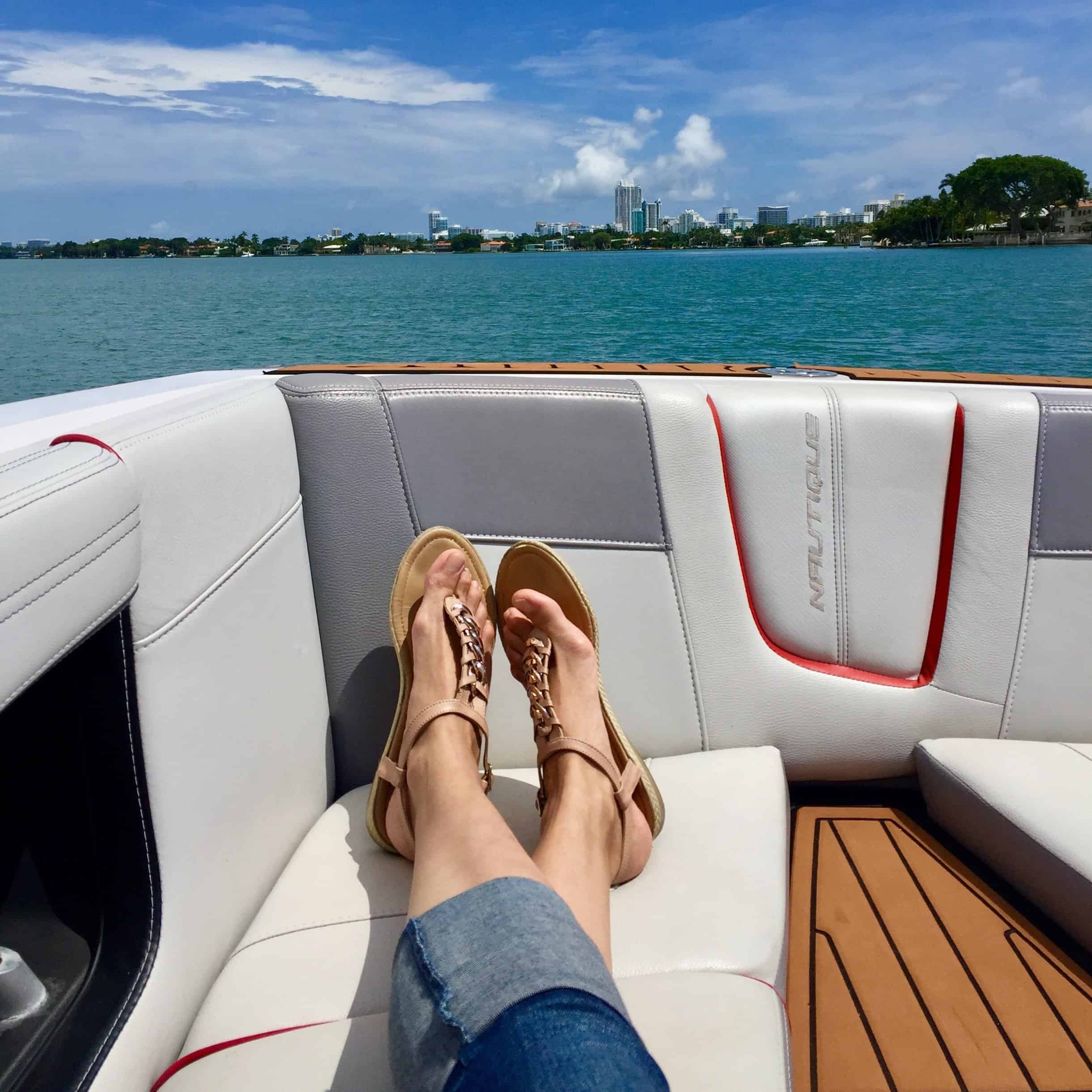Even though we’ve just celebrated the New Year, we all know that in no time summer will come, and our winter boots will be swapped for a cute pair of summer sandals. So the question arises, “How should sandals fit, actually?”
Let’s be real. There’s probably nothing worse than buying the most perfect and in-style sandals and wearing them to a special event, only to come home with painful (and oftentimes bloody) calluses and blisters. Yikes!
The healing process can last for weeks and since the wound is on your feet, it’s extremely uncomfortable to walk and wear any type of footwear. Not to mention the main culprit – those deadly sandals!
All of that trouble because of one single wear?! Pretty sad, if you ask me. Unfortunately, that’s a reality for many people, especially girls.
However, there’s no need to live in fear of your sandals. There’s a way for you to enjoy them without the need to sacrifice the much-needed comfort.
Yup, it’s true! You can be both stylish and comfortable this summer with your new, perfectly fitting sandals!
So, keep reading to find out how to achieve this and learn how should sandals fit. I’m about to spill all the tea for you.
Is your shoe size the same as your sandal size?
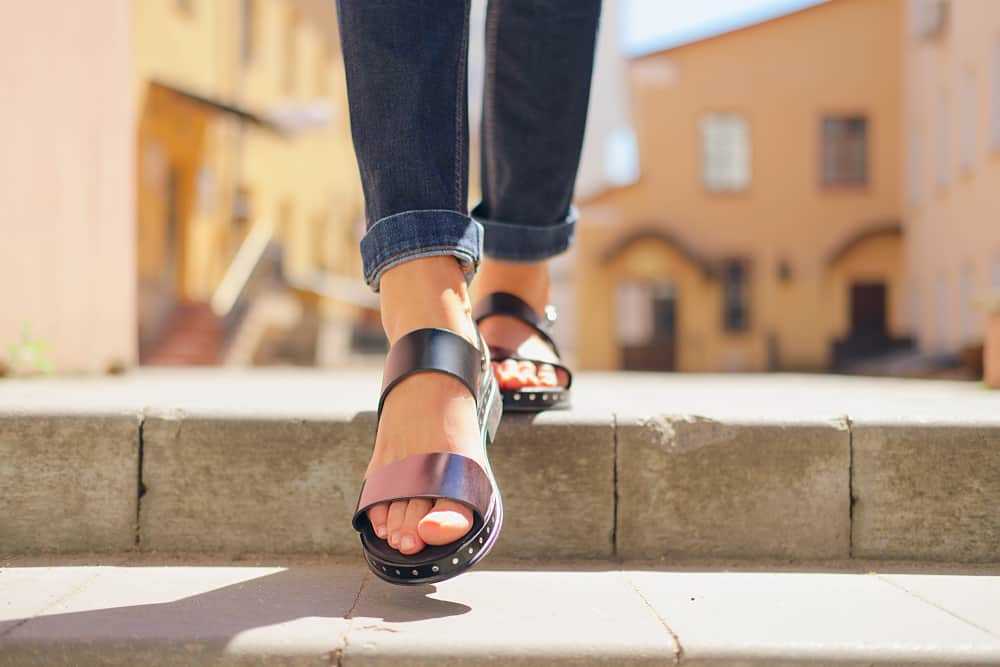
This might come across as weird and unnecessary to ask, but it’s actually a very common question. Many people wonder whether their usual shoe size is the same as their sandal size. However, there’s no specific and simple answer to it.
Although everyone will probably go for their usual size when buying sandals, oftentimes they discover the sizes don’t exactly match. I know I do. Sometimes I even pick my usual size and try the sandals in the store, only to find out back home they don’t exactly fit how I wanted them to.
The truth is that usually, every brand of footwear has its own sizing chart. Of course, you probably won’t be a size 7 in sandals and 9 in boots since that’s too big of a difference, but a small deviation will occur.
For example, I usually go for 8.5 when buying sneakers. But, if I decide to opt for a Nike model, I know from my past experience that I need to be at least half a size up because Nike sneakers tend to run small.
When I’m buying winter boots, I sometimes go an entire size up, because I know I’ll be wearing fuzzier socks.
The same thing happens with sandals, and even though the shoe and sandal sizes usually align, the overall situation is not that simple. Not all sandals were made with the same intention, and you’ll need different sandals for different occasions.
Another thing that needs to be addressed is that almost all brands don’t produce sandals of half sizes. So, since I’m an 8.5 sneaker size, I would probably never find a pair of sandals with the same size since they only come in “complete sizes”.
In this case, it’s best to opt for a bigger size, and never go for a smaller one. Therefore, I’ll go for size 9 in sandals. We’ll discuss why is it better to size up in more detail later.
How should sandals fit?
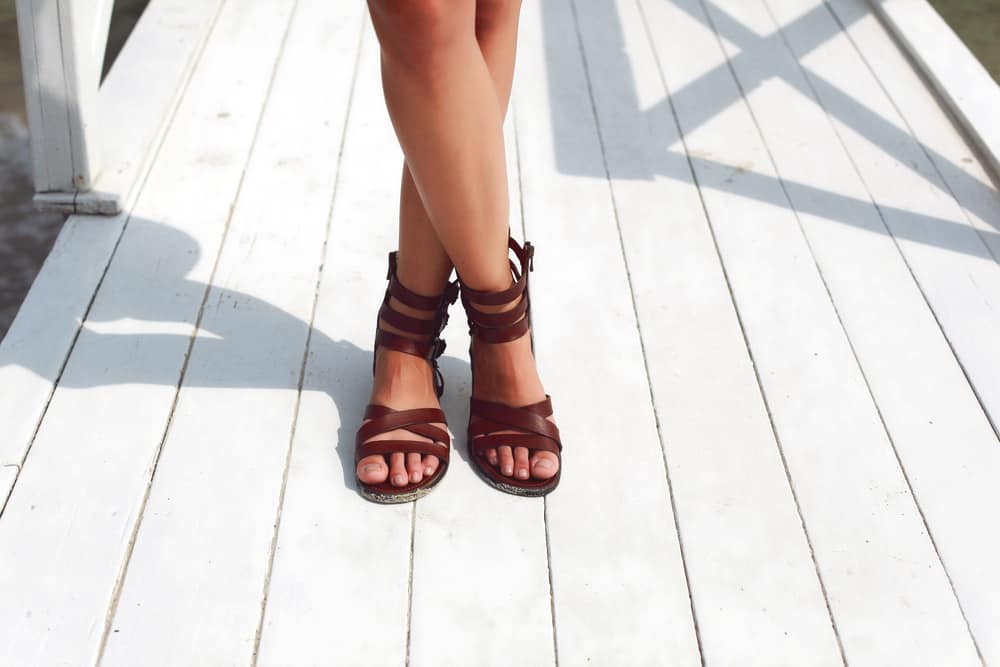
Since you cannot trust your own shoe size when buying sandals, let’s see how should sandals fit actually?
We all can tell when sandals don’t fit. Not only is it uncomfortable, but it’s also visible to others. So, it’s not like you can hide it.
Ill-fitting sandals are those that cause extreme pain to the soles of our feet, our heel is either protruding over the back or has too much free space, and our toes hang over the front, or they’re too far from it.
Also, if the sandals have straps, they painfully dig into our feet, looking as though they’re obstructing the blood flow. And every time you wear them you end up with blisters and calluses, or even ingrown toenails.
So, how to choose sandals that actually fit and aren’t an incarnation of penance?
There are a couple of things you should keep an eye on when deciding what sandals to buy, and we’re going to discuss all of them.
First, we’ll see how should sandals fit in the front of the foot and then at the back, and later we’ll see what other factors have a significant impact on the fit of the sandals.
In the front
As we have mentioned above, it’s important that your toes don’t hang over the front of your sandals or have too much space at the front. It doesn’t look great, and it certainly doesn’t do your feet any justice.
When it comes to the right fit in the front of your sandals, you should look at one specific characteristic.
Almost every sandal style has a sewn line that goes around the whole outer rim of the sole bed. That seam should be your guide, a borderline for your toes. They should come right up to that seam, or be placed just behind it.
Try to look at it this way: it’s your mission to hide that line as best you can. If no one can see it – your sandals will fit perfectly!
At the back
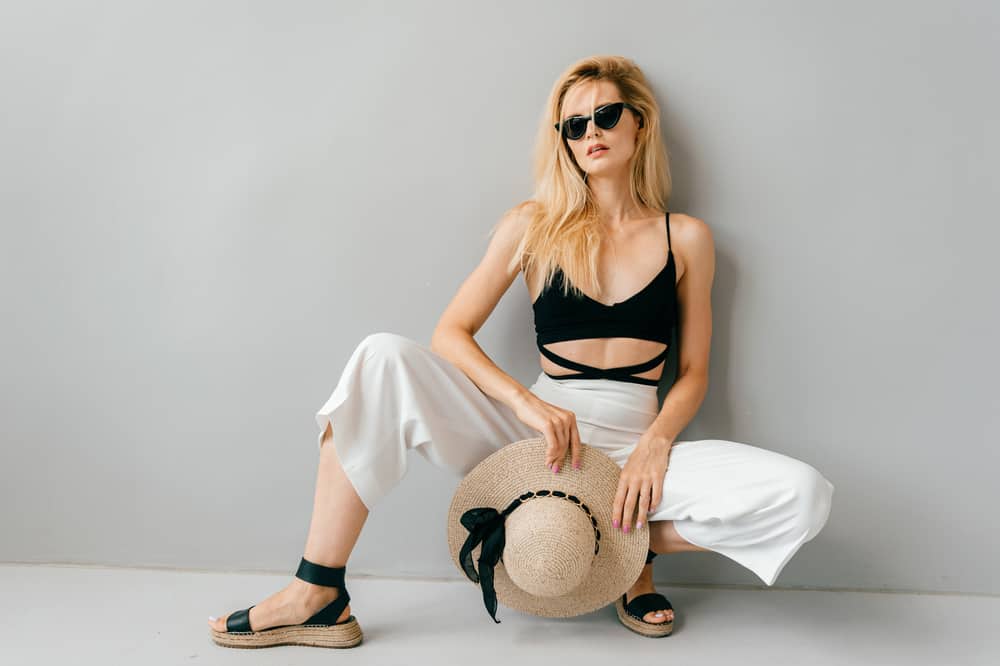
And, how should sandals fit at the heel area? Well, a snug fit is an ideal option.
As mentioned above, your heel should not protrude over the back. If your heel goes past the soles of the sandals at the back, the straps will definitely cut into your skin. And we all know how uncomfortable and painful that can be.
Also, that portion of your heel won’t be protected by the sole of the sandals, so your feet will be more exposed to external impacts, like dirt, rocks, and the like.
The final verdict: How should sandals fit in the front and at the back?
The most important thing is to make sure neither your toes nor your heels protrude over the soles of your sandals. However, this is not that easy to achieve since there won’t be an even amount of space on each side of the sandal.
Also, your foot will change throughout the day, which means it will take up more space in certain places. Of course, you will eventually break in your sandals, which will result in them fitting entirely differently than at the beginning.
So, as said, many things affect the perfect fit of sandals and there’s no simple answer to give when asked, “How should sandals fit?” To ensure your comfort isn’t compromised, check out some other important features below.
Features to consider when purchasing sandals to ensure the perfect fit
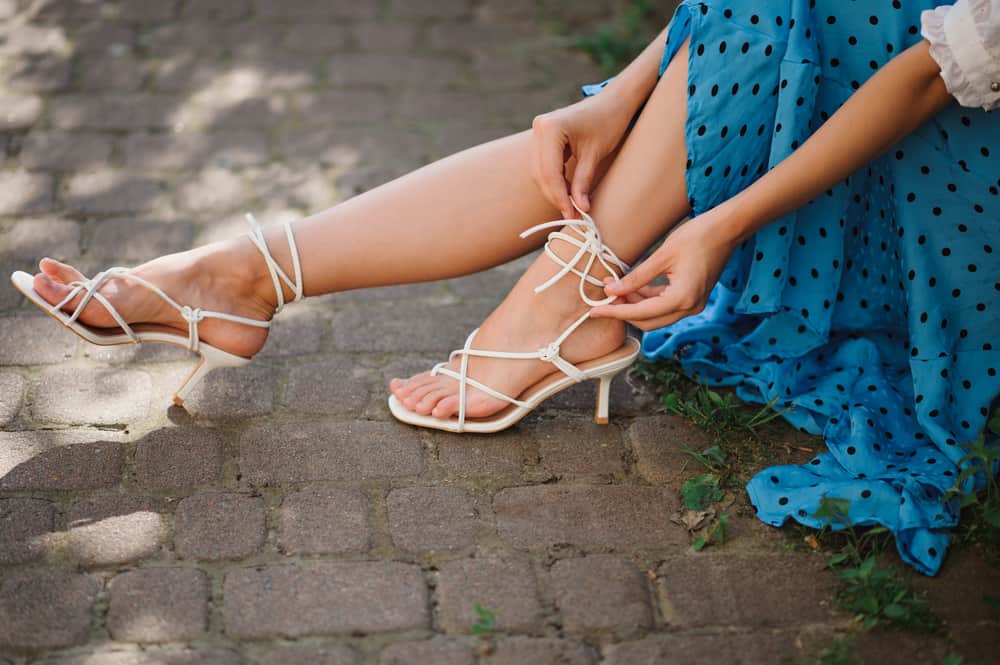
1. The width and the length
These might be the most important ones, actually. Your sandals should be wide enough to fit the widest part of your feet, without being too constricting.
This ties in with something we’ve already mentioned; it would be best if you opted for a half or even a whole size bigger sandal, as your foot can expand during the day. We all know what hotter weather can do to our poor feet. Or an all-day-long standing. They’ll swell like crazy!
By going a size up, you’re giving your feet all the room they need to expand, without the unwanted feeling of too tight or narrow sandals.
Just make sure you don’t buy sandals that are too big since your feet can slide around and not feel secure. This is also a great recipe for disaster, aka. calluses and blisters.
The science behind the length is very simple: if either toes or heels go beyond the footbed of the sandals – your sandals are too small.
Almost every brand offers a sizing chart that can help you properly measure your feet and opt for the right sandal size. Here’s a quick guide on how you can correctly measure your feet:
- Place a piece of paper on the floor or the flattest area in your house and step on it, one foot at a time.
- Carefully trace the perimeter of each foot. Keep in mind that the perimeter you trace should entirely fit inside your future sandals.
- Make sure you can see the whole outline of each foot when you look from above.
- With a measuring tape, measure the length and width of your feet. You’ll measure the length from the tip of your largest toe to the back of your heel, and the width is the straight line of the widest part of your foot.
- Write down the numbers you get.
- Compare your measurements to the size chart the sandals brand offers and find your perfect size.
Ideally, there should be about 5 mm between the corner of the footbed and your heel and approximately 10 mm between the corner of the footbed and your toes on the front. Therefore, keep this info in mind, so you can purchase the comfiest sandals ever.
2. Sandals’ straps
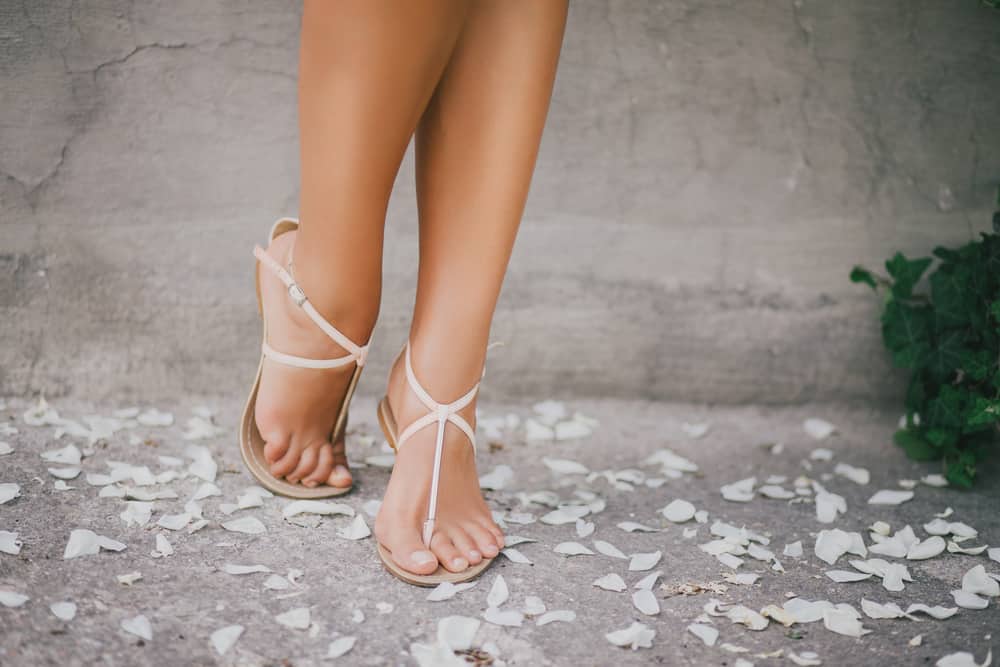
They are a perfectly simple fashion statement piece that makes any outfit ten times better. However, the wrong size of your sandals can make your life a living hell, and the straps your worst enemy.
The straps of your sandals shouldn’t dig into your toes, heels, or any part of your feet, actually. They should be long enough to provide secure fit and comfort, without being too loose.
If you know your feet will swell during the day, look for sandals that have adjustable straps. By doing so, you’ll be able to adjust the “size” of your sandals during the day according to your current comfort and preference.
Also, pay attention to how the straps are made and attached to the footbed. Look for straps that are made out of two or more layers of material and that go over the footbed rather than being tied at their corners. This will ensure the longevity and comfort of the straps and sandals in general.
3. The shape
The shape of the footbed greatly influences the fit of the sandals. The anatomically shaped footbeds will run slightly smaller since your foot won’t sit as flat in them.
It is common for anatomically shaped footbeds to come with a heel cup, built-in arch support, and a toe grip. Each one of these features promotes the correct foot posture.
4. Materials
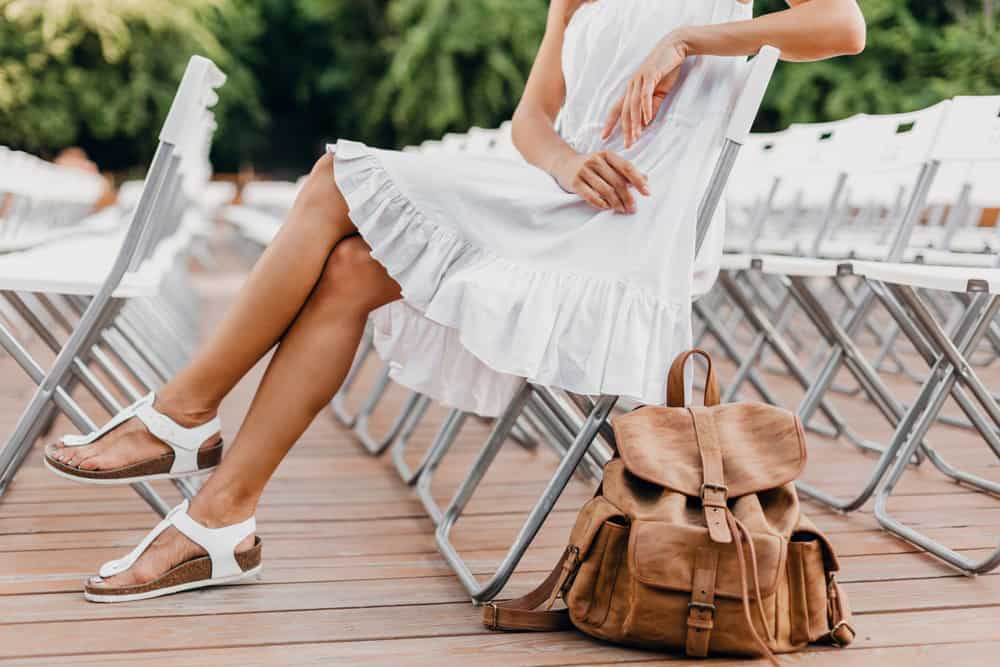
The right material is another important feature to consider when wondering how should sandals fit. If your sandals are made out of low-quality material, you can be sure they will not fit properly, and that they’ll be extremely uncomfortable and not that durable.
But sandals made out of high-quality material, like leather, for example, will be extremely durable and in time will adapt to the shape of your foot. Although a bit stiff at first, they’ll become the comfiest sandals you own.
You’ve probably heard of Birkenstocks. They’re more than comfortable and an all-time trending piece of footwear in many people’s closets. They can also be styled with many trendy outfit pieces, for sure.
5. Arch support
Arch support is another must-feature to keep an eye on, especially if you’re someone who spends a lot of time standing or walking. There’s no need to wear bulky but comfy sneakers and risk sweaty feet in summer when you can find a pair of good sandals with proper arch support.
If not, you can always insert your orthopedic insoles in your sandals. Just make sure you consider this when deciding what sizes to opt for.
Read more: A Step-By-Step Guide To Different Types Of Sandals
